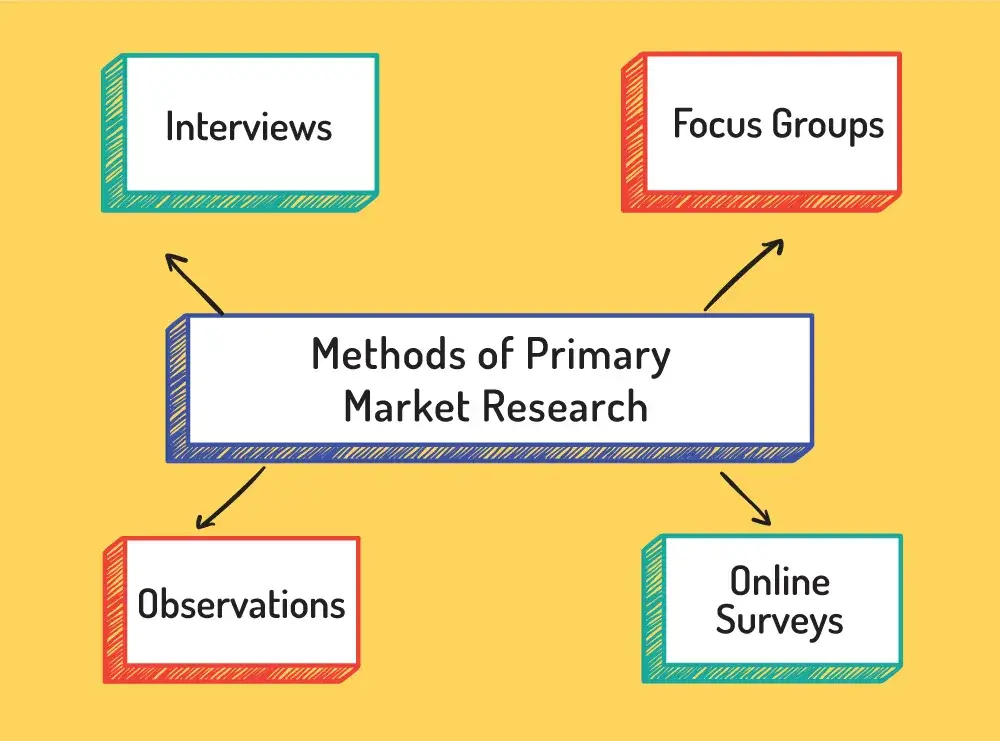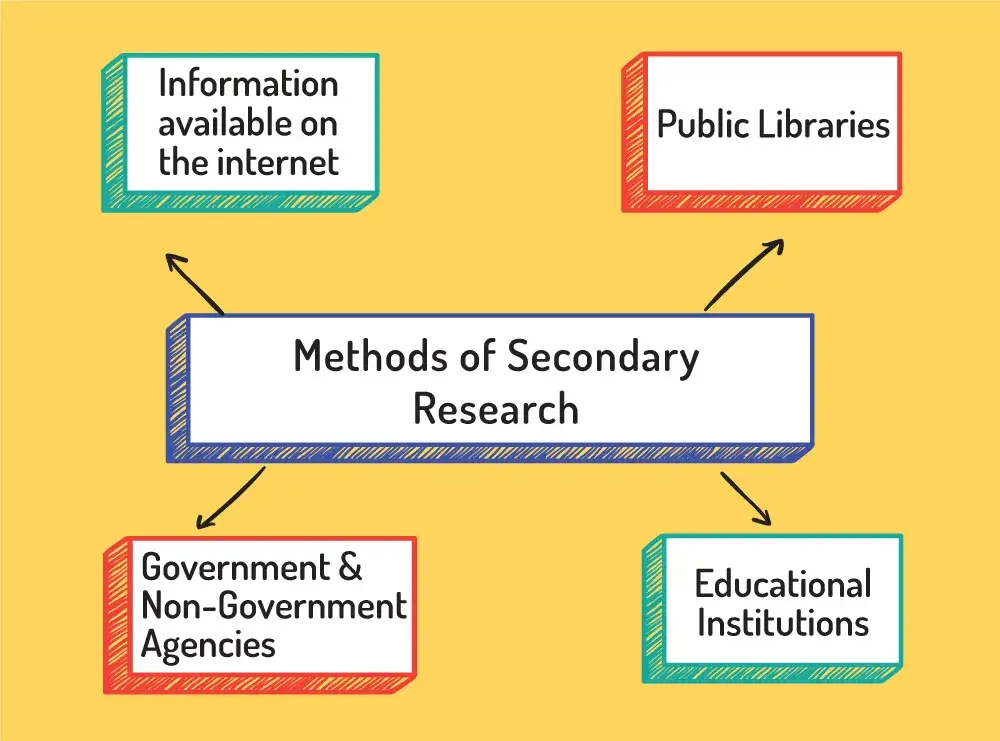Market Research Techniques for Primary and Secondary Research

Here's What We've Covered!
Introduction
To start any business, it is very important to conduct a proper market survey or study the market dynamics as closely as possible. Such study can only be done through what is known as Market research. Now, there are several types of such market research techniques classified either as primary or secondary market research techniques and we will be discussing few of them here.
Primary market research
One of the common way to collect information about any small business product is the primary market research. One can carry out such market research technique to study various market dynamics, such as existing demand for the product or the size of the target market. Since a primary market research is conducted by the researcher himself, he can customize the research according to his specific needs that suits the business requirement. The following are few of the frequently used primary market research techniques:
- Observation
- Focus groups
- Interview
- Survey / Questionnaire
Different primary market research techniques
1. Observation:
In the case of observation market research, the researcher monitors and notes the behaviors of the potential set of customers in action and makes certain observations. This techniques involves merely watching the customers buy a product or avail a service (which is similar to the one being planned by the researcher), listen to what the customers say while shopping, notice how much they are willing to pay for that product or service. It is to be noted that throughout the entire process the researcher does not interact with the customer. This techniques is best fitted for products catering to customers and not to other businesses.
2. Focus Groups:
In case of focus groups, there is a moderator who leads the discussion about a particular subject among a small group of 8 to 12 potential customers. The objective of the moderator is to make everyone participate in the discussion either by showing pictures of potential advertisements or asking the participants for their opinion about the product or service after they have tried it. The moderator intends to gather as much qualitative data (attitudes and opinions) as possible. One of the primary benefit of a focus group is that the participants can build upon each other’s ideas. However, in focus groups there is the risk of a biased moderator, a dominating participant who can turn the discussion into a monologue or some participants who may be to reluctant to even express their honest opinion in a public forum.
3. Interview:
Interviews can also be seen as a focus group, but with only one participant interacting to only one researcher, which makes it a one-to-one dialogue. An interview can be either face-to-face or telephonic and it is one of the most effective primary research technique since it helps in receiving more in-depth answers from the participants. Further, the responses from the participants can be recorded and the questions can be rephrased in order to get a more definite response. A seasoned interviewer can have the potential to engage and persuade a participant to give a more comprehensive answer. Interviewing technique is usually suited for product or service which are too personal or private for a group discussion. Examples of such products can be personal hygiene products, financial services etc.
4. Survey / Questionnaire:
This is another technique of primary market research wherein the researcher gathers feedback from potential customers through surveys or structured questionnaires. Such surveys or questionnaires are usually conducted over phone, through email or personally. Usually several surveys are conducted in order to receive feedback from a diverse set of customers. It is to be noted that in case there is a lack of large sample group to conduct surveys, then small sample groups can also be used, but with a pinch of salt while making any major business decisions based on this small amount of feedback.
Secondary market research
The other way to collect information is the secondary market research wherein the researcher gathers existing information through already available data sources. However, the available information does not make the task easier for the researcher as the biggest challenge is to find which information is relevant for the business. Secondary research is also known as desk research given the nature of the research. The following are few of the commonly used techniques of secondary market research:
- Information available on internet
- Government and non-government agencies
- Public libraries
- Educational Institutions
Different secondary market research techniques
1. Information available on internet:
It is one of the most common techniques of gathering secondary data. Plethora of information is easily available on the internet that can be used by organization according to their requirement. Despite of such huge volume of information, in today’s world internet is available at practically free of cost or at a very negligible amount of money. There are a number of websites that hold a lot of information which can be used by secondary data analyst to suit his research needs. Nevertheless, it is to be noted that organizations should only consider trusted and authentic websites to gather such secondary information. Wikipedia is one of the trusted and authentic source of information.
2. Government and non-government agencies:
Another source of secondary research data can be government and non-government agencies from where one can gather vital and classified information. Researchers acquire information from such agencies since they are sources of reliable and authentic data. But not everyone can get an access to this type of source and as such there is a certain cost associated with the use data from these agencies. Few examples of such agencies are US Census Bureau, US Government Printing Office and Small Business Development Centres that are repository to relevant and valuable information that can be of use both nationally and internationally.
3. Public libraries:
Some secondary researchers resort to public libraries since it is also considered to be a good source for already existing data for any research. Usually such libraries have prints or photocopies of important research that were conducted in the past. A researcher can refer such a storehouse of vital data and documents to note down the important data as per the requirement. However, all the libraries are not the same and as such the services provided vary from one library to another. Most of the libraries are a source of collection of government publications along with various newsletters, market statistics etc.
4. Educational Institutions:
Although educational institutions are the most overlooked sources of secondary data, they continue to be an important source of gathering secondary data. A large number of primary research works are done in colleges and universities compared to any other business sector. A secondary research analyst can refer the data that is gathered by the universities, but for that they should approach the educational institutions and request permission for accessing the data.
Conclusion
From this article it can be seen that there are number of techniques for both primary and secondary research, all of which are of different level of information authenticity and cost of information acquisition. But, eventually it is the researcher who needs to decide which is the best research technique for his project based on its requirements and cost affordability.
Resent Post
>
Emerging commerce career options in India (2026): From CA to Data Analyst
>
ACCA Opportunities You Didn’t Know About – Think Beyond Audit!
>
Which Courses After 12th Commerce With High Salary Are in Demand Worldwide?
>
How to Find ACCA Jobs Online After Qualifying: Real Portals, Tips & Career Guidance
>
Financial Modelling Classes in Hyderabad: Your Guide to the Best Institutes
Follow Us For All Updates!





